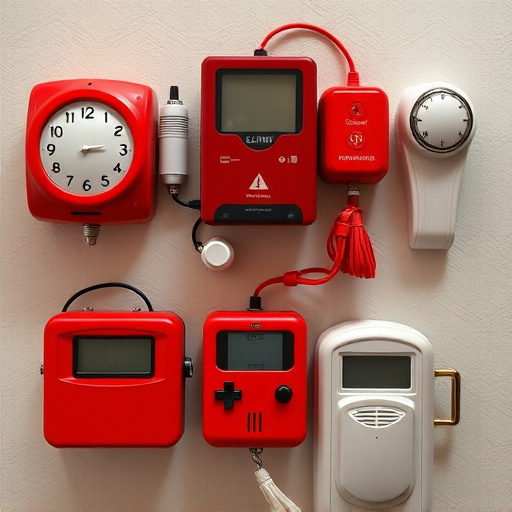Personal alarms for late-night safety offer decibel ranges up to 100dB, with distance coverage from 20-100 meters. Compare devices based on these ranges and intended use (indoor/outdoor). Understand best practices including testing, battery care, and responsible activation for effective emergency response.
Staying safe during late-night walks or shifts is paramount. Personal protection devices, particularly personal alarms, offer crucial peace of mind in low-light or high-risk situations. This article delves into the essential components of effective personal safety gear for nighttime use. We explore key factors to consider when choosing a device, dissect popular personal alarm features and benefits, analyze critical aspects of personal alarm distance range comparison, and provide best practices for optimal utilization.
- Understanding Personal Protection Devices for Late Night
- Key Factors to Consider in Choosing the Right Device
- Popular Personal Alarms: Features and Benefits
- Distance Range Comparison: What You Need to Know
- Best Practices for Effective Use of Personal Alarm Devices
Understanding Personal Protection Devices for Late Night
Personal protection devices designed for late-night use are crucial tools for individuals navigating dark and secluded areas. These devices often include personal alarms, which serve as a powerful deterrent against potential threats. When considering these tools, it’s essential to understand the varying distance ranges they offer, as this can significantly impact their effectiveness.
A key aspect to consider is the personal alarm’s distance range—how far it can be heard or detected. Some devices boast ranges of up to 100 decibels, which can startle would-be assailants and attract attention from nearby bystanders. Others may have shorter ranges, suitable for close-quarters protection. When comparing personal alarms, understanding this feature allows users to select a device that aligns with their specific needs, whether they’re walking alone at night or working in remote locations.
Key Factors to Consider in Choosing the Right Device
When selecting a personal protection device for late-night use, several key factors come into play. One of the most crucial considerations is the personal alarm distance range. This refers to how far away the alarm can be triggered and still be effective. Different devices offer varying ranges, typically measured in meters or feet. For added safety, opt for a device with a sufficient range that allows you time to react and call for help if needed.
Additionally, compare features like personal alarm distance range to ensure compatibility with your intended usage scenario. Some devices may be better suited for indoor use while others excel outdoors. Consider the environment where you’ll most frequently use the device; this will guide your choice in terms of power source (rechargeable vs. disposable), weatherproofing, and other practical considerations.
Popular Personal Alarms: Features and Benefits
Personal alarms have become a popular choice for personal protection, especially during late-night activities. These compact devices offer a range of features designed to deter potential threats and alert others in an emergency. One of the key advantages is their long-range effectiveness, with some models offering alarm signals that can be heard up to 100 feet away. This distance range comparison is crucial for ensuring maximum coverage while staying discreet.
The benefits extend beyond the loud alarm sound. Many modern personal alarms come equipped with features like LED flashlights, stun functionality, and automatic fall detection. These additional tools provide users with a multi-layered safety net, making them ideal for late-night walks, outdoor adventures, or even travel. The versatility and ease of use make personal alarms an accessible and effective solution for individuals seeking peace of mind while navigating the darkness.
Distance Range Comparison: What You Need to Know
When considering personal protection devices, understanding the distance range is crucial. Different types of personal alarms offer varying levels of coverage, from compact and close-range options suitable for carrying in your hand or pocket, to more powerful devices designed for long-range protection.
A Personal Alarm Distance Range Comparison reveals that high-decibel alarms can typically reach distances between 50 to 100 meters (164–328 feet), depending on environmental factors like terrain and noise levels. These are ideal for outdoor activities or situations where you need a quick, far-reaching warning signal. On the other hand, smaller, lighter alarms may only be effective up to 20-30 meters (65-98 feet), making them more suitable as a last resort defense mechanism in close-quarter encounters.
Best Practices for Effective Use of Personal Alarm Devices
Personal alarm devices are highly effective tools for personal protection, especially during late-night activities. To ensure their maximum effectiveness, users should familiarize themselves with best practices. One key aspect is understanding the personal alarm distance range comparison. Different devices have varying ranges; some offer alarms that can be heard up to 100 meters away, while others may have a more limited range. Knowing this specification allows individuals to choose an alarm that covers their typical activity areas and ensures they can be heard in case of distress.
Additionally, users should regularly test the device’s functionality by pressing the alarm button to ensure it is working properly. Regular maintenance, such as replacing batteries, is crucial to guarantee a reliable response during emergencies. Practicing how and when to activate the alarm is equally important; this includes learning the difference between a false alarm and a genuine threat, ensuring that users employ the device responsibly and avoid unnecessary disturbances to neighbors or bystanders.
Personal alarm devices offer a sense of security during late-night walks or in unfamiliar surroundings. By understanding your needs, considering key factors like decibel level, portability, and distance range (as highlighted in our Personal Alarm Distance Range Comparison), and following best practices for their effective use, you can choose the right device to enhance your personal safety. Remember, a well-informed decision can make all the difference when it comes to peace of mind at night.
